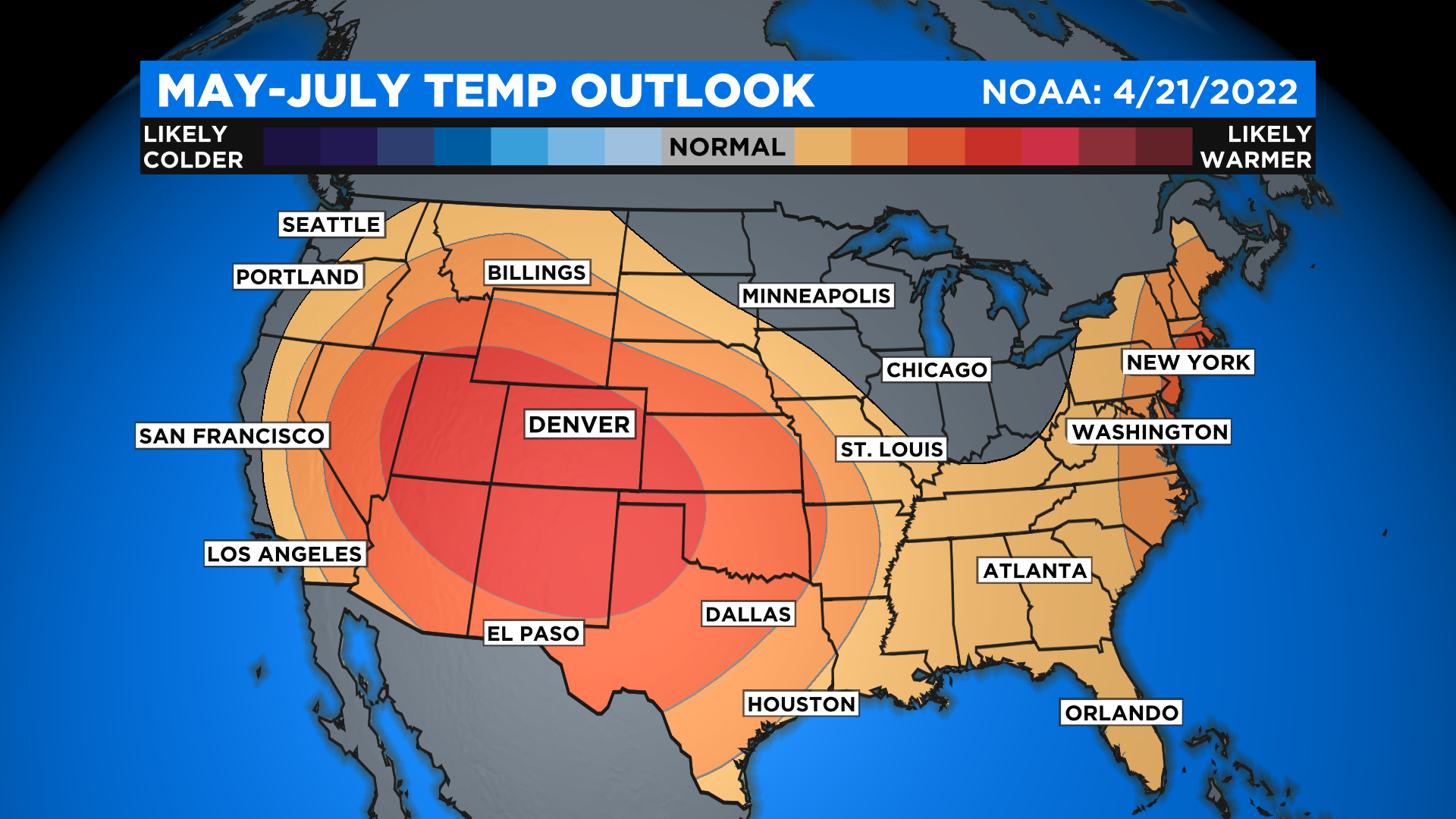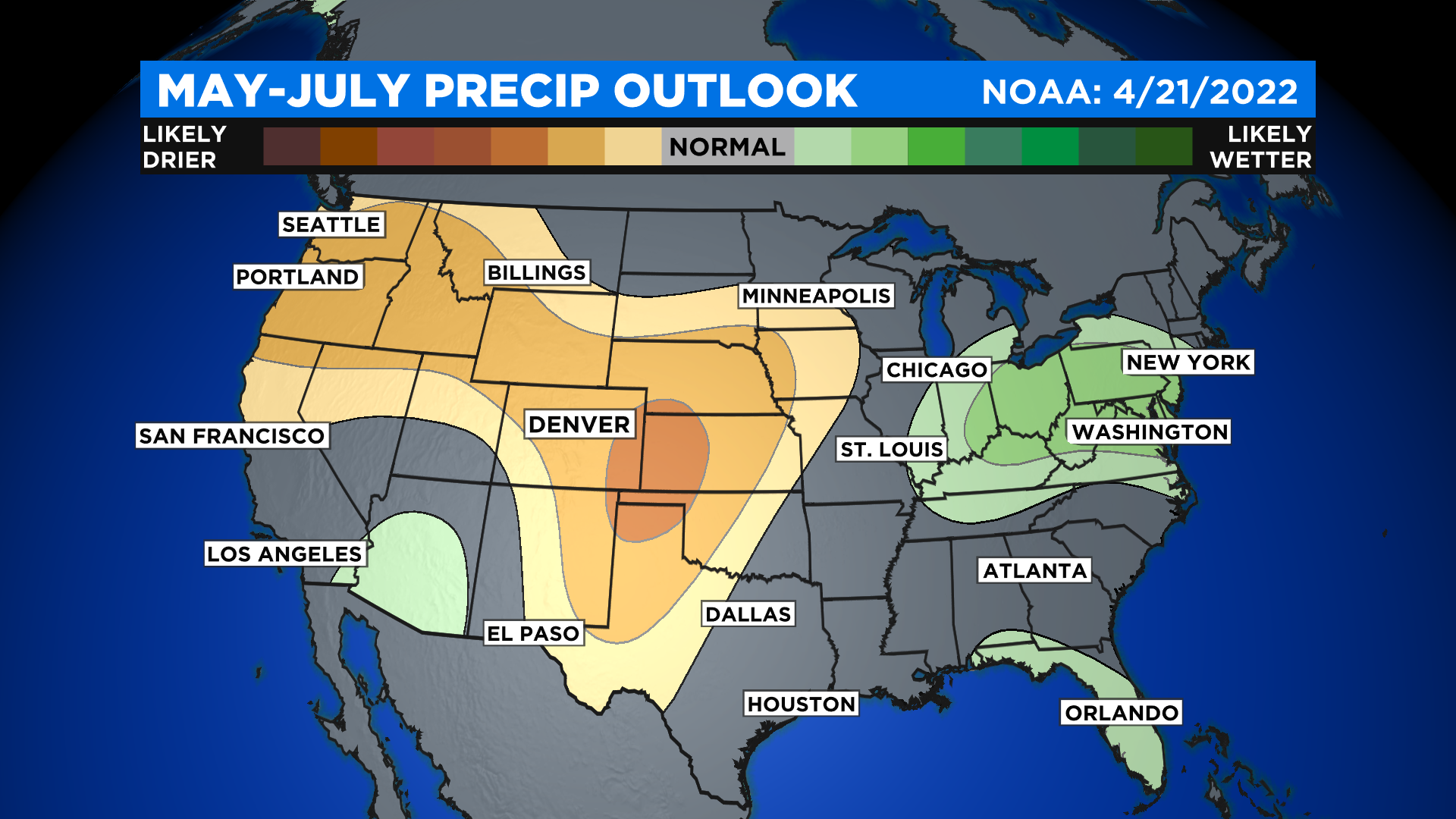La Niña To Stay Through Summer, Recent NOAA Outlook Leans Hot And Dry For Colorado
DENVER (CBS4) - After a fairly dry start to spring across Colorado many are looking toward the future for some relief in the fire danger. But a recent outlook from government forecasters doesn't offer a lot of hope as we look toward May, June and July.
On April 14 the Climate Prediction Center at NOAA released their La Niña forecast which calls for the global weather phenomenon to last several more months. A La Niña Advisory issued last September remains in effect with a 59% chance that it will continue through August.
La Niña is a cooling of the equatorial waters off the west coast of South America, but it has a teleconnection on weather patterns around the world. In Colorado we typically hear about impacts from an episode of La Niña during the fall and winter more than the summer months.
Historic data from NOAA shows that the presence of La Niña during May, June and July tends to have the most impact on precipitation and temperature in northeast Colorado, including Denver. Precipitation in this part of the state tends to be lower with higher temperatures as compared to when neutral conditions or an El Niño is present.
El Niño is a weather phenomenon that can be declared when equatorial waters along the west coast of South America are warmer than normal. It is the opposite of La Niña. Neutral conditions mean the water temps in that part of the world are basically normal, and there isn't any significant impact to the global circulation and planetary weather patterns.
The current temperature and precipitation outlook for May, June and July across the United States, released by NOAA on April 21, shows the entire state of Colorado will have a high chance to see above normal temperatures. In fact, the entire state falls in the "likely" to be warmer than normal category with a 60-70 percent chance.

When it comes to precipitation the outlook varies but has the majority of Colorado falling in the 40-50 percent range, which is called "leaning below" normal. A section of the far eastern plains falls in the "likely below" normal category with a 50-60 percent chance. Extreme southwest Colorado has the most encouraging outlook with equal chances to see normal, above or below normal precipitation.

One thing to keep in mind with these outlooks is that they cover a 90-day period. In Denver, the average precipitation between May, June and July totals 6.24 inches. If we end up getting 5.21 inches, the outlook will verify because that is below normal, although it isn't as dire as if we were to see only an inch or two during the same 3-month period.






